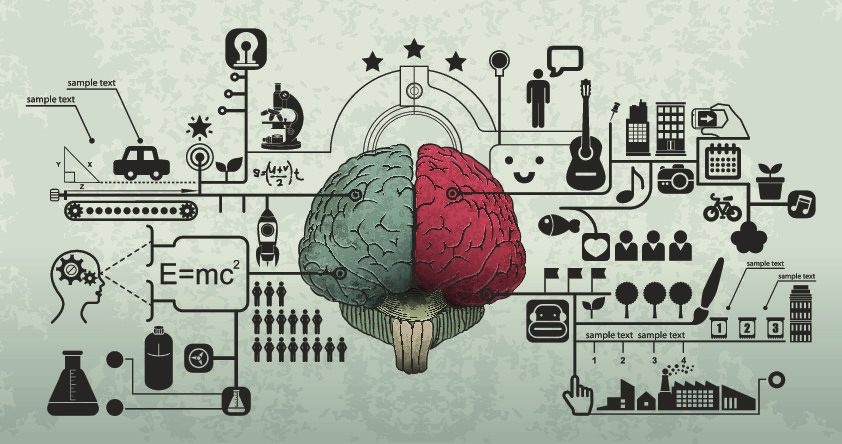The Art of Making Choices: Navigating the World of Decision Making
Life is a series of crossroads, each decision shaping the path we tread. From the moment we wake up to the moment we lay our heads to rest, we are faced with countless choices that have the power to alter our course. The art of making choices is a delicate dance between intuition and logic, emotion and reason. In this article, we will explore the intricate world of decision making, uncovering the strategies and techniques that can help us navigate the maze of possibilities that lay before us. Join us on this journey as we seek to master the art of choice in a world filled with endless options.
Exploring the Concept of Decision Making: Understanding the Factors at Play
When faced with a decision, it’s important to understand the various factors that come into play. Emotions, logic, values, and external influences all play a role in shaping our choices. Emotions can cloud our judgement, while logic can help us weigh the pros and cons. Our values guide us in making decisions that align with our beliefs, and external influences such as peer pressure or societal norms can sway our choices. Moreover, risk assessment and uncertainty are crucial elements to consider when making decisions. The ability to evaluate the potential outcomes and level of uncertainty associated with each option can impact the decision-making process. By identifying goals and setting priorities, individuals can navigate the complexities of decision making more effectively. Taking the time to analyze the situation, gather information, and consider alternatives can lead to more informed and successful choices.
Recognizing Cognitive Biases: Overcoming Mental Blocks in Making Choices
When faced with making important decisions, it is crucial to be aware of the cognitive biases that can cloud our judgment. These mental blocks can lead us astray and prevent us from making rational choices. By recognizing these biases and actively working to overcome them, we can navigate the world of decision-making with clarity and confidence.
One common cognitive bias is confirmation bias, where we seek out information that confirms our preexisting beliefs and ignore evidence that contradicts them. Another bias is anchoring, where we rely too heavily on the first piece of information we receive when making a decision. By actively questioning our assumptions, seeking out diverse viewpoints, and being open to new information, we can break free from these mental blocks and make more informed choices.
Embracing Uncertainty: Strategies for Making Informed Decisions
When faced with uncertainty in decision-making, it can be easy to feel overwhelmed and stuck in a state of indecision. However, embracing uncertainty can actually open up a world of possibilities and opportunities for growth. By approaching decision-making as an art rather than a science, we can learn to navigate the complexities of choice with grace and confidence.
One strategy for making informed decisions in the face of uncertainty is to practice mindfulness and self-awareness. By tuning into our thoughts, emotions, and values, we can gain clarity on what truly matters to us and make choices that align with our authentic selves. Another valuable approach is to gather as much information as possible, weighing the pros and cons of each option before making a decision. Being open to new possibilities and perspectives can also help us broaden our horizons and make decisions that lead to personal and professional growth.
Mastering the Art of Decision Making: Practical Tips for Navigating Life’s Crossroads
When faced with tough decision-making dilemmas, it’s important to remember that every choice we make has the power to shape our lives in significant ways. To navigate the complex world of decision-making, consider the following practical tips:
- Clarify Your Values: Take the time to reflect on what truly matters to you and align your decisions with your core values.
- Seek Input: Don’t be afraid to seek advice and feedback from trusted friends, family members, or mentors to gain different perspectives on the situation.
- Consider the Consequences: Think about the potential outcomes of each decision and evaluate how they will impact your goals and aspirations in the long run.
| Option A | Option B |
| Pros: Immediate benefits | Pros: Long-term rewards |
| Cons: Limited growth | Cons: Initial challenges |
By mastering the art of decision-making, you can navigate life’s crossroads with confidence and clarity, making choices that align with your values and lead you towards a fulfilling and purposeful life.
Final Thoughts…
As we conclude our exploration into the intricate world of decision making, we are reminded that the art of making choices is a skill that can be honed and perfected over time. By understanding the various factors at play and using strategies to navigate through the complexities of decision making, we can empower ourselves to make informed and effective choices. Remember, each decision we make shapes our path and ultimately defines our journey. So, let us embrace the challenges that come with making choices, for it is through these moments of uncertainty that we truly discover our own strength and resilience. Here’s to embracing the art of making choices and navigating the twists and turns of life with grace and wisdom. Happy decision making!




 Building a successful business requires the ability to make decisions. It is imperative for entrepreneurs to make the right decisions and put them into action effectively.
Building a successful business requires the ability to make decisions. It is imperative for entrepreneurs to make the right decisions and put them into action effectively. Decision-making is one of the most important qualities when it comes to successfully running a business. Without being able to make the right decisions a business is likely to completely flounder. That’s why it’s so important to know which qualities separate a proper decision-maker from somebody who is simply coasting. Whether you are the CEO of a company but are unsure of how to proceed or you are looking to rise up the ranks of your company through firm and decisive action, you have come to the right place. Read on now for all you need to know about decision-making.
Decision-making is one of the most important qualities when it comes to successfully running a business. Without being able to make the right decisions a business is likely to completely flounder. That’s why it’s so important to know which qualities separate a proper decision-maker from somebody who is simply coasting. Whether you are the CEO of a company but are unsure of how to proceed or you are looking to rise up the ranks of your company through firm and decisive action, you have come to the right place. Read on now for all you need to know about decision-making.